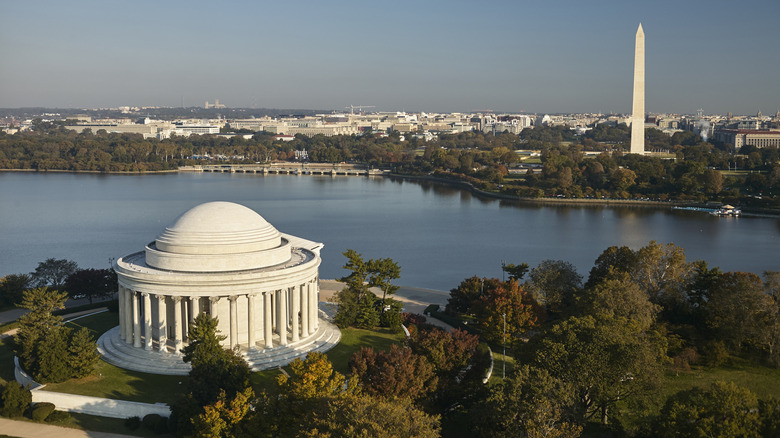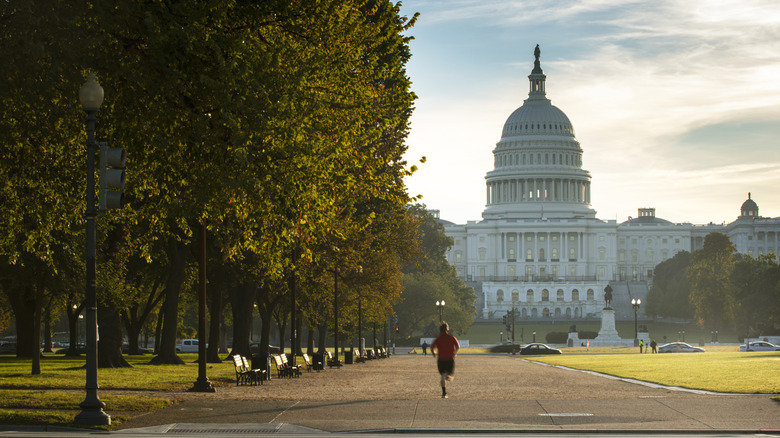A Huge Washington DC Attraction Has Been Rated The 2nd Biggest Tourist Rip-Off In America
Tourism is definitely a for-profit industry. It can be frustrating for travelers to figure out what is worth the money and what is not. Some turn to guidebooks, word of mouth advice, or online review sites so they can get tips to avoid overrated tourist traps. While global travel expert Rick Steves says you should think twice before trusting travel review sites, sometimes overwhelmingly negative experiences shared by Tripadvisor users and other online reviewers shouldn't be ignored.
Casino.org set out to compile a list of the biggest rip-offs among popular United States destinations, so they searched comments on Google Trends and Tripadvisor, and then asked participants to take a survey. The results ranked the National Mall in Washington D.C. as the second biggest tourism rip-off in the country. Disney World was the top-ranked rip-off, but the National Mall is an unusual entry on the list because it is a free-to-visit national park. While some survey respondents found the National Mall experience to be less-than-ideal (or they didn't know what to expect), what really makes it a rip-off are the other associated expenses that visitors should factor in when planning a trip to this historic place.
Salespeople take advantage of tourists at the National Mall
Despite its name, the National Mall is not a collection of stores. It is located in the heart of Washington D.C. and incorporates buildings and monuments easily recognized all over the world. The National Mall covers over 1,000 acres of land that stretches from the United States Capitol in the east, to the Lincoln Memorial in the west. In between these huge landmarks are beautifully cultivated gardens and walkways, tons of museums, war memorials, presidential monuments, the Lincoln Memorial Reflecting Pool, the Washington Monument, and D.C.'s famous cherry blossom trees in the spring.
Such a variety of things to do and see sounds like great bang for your buck, especially since all of this is free to explore. Even the multiple branches of Smithsonian museums at the National Mall have free admission. But the responders in Casino's survey said both food and accommodation around this part of D.C. are too expensive. For example, many hotels in the area are more than $150 per night.
Cost aside, one survey respondent told Casino.org that the National Mall is riddled with "manipulators exploiting tourists for cash." The respondent also cited pushy salespeople and trash on the grounds as other drawbacks at the National Mall. Another survey respondent was apparently confused by the name. "No real stores ... just a bunch of old buildings. They should probably rename it," they told Casino.org, adding "Was a bit disappointed, was hoping for winter sales."
Transportation around the National Mall has changed
Getting around the National Mall is not as cheap as it once was either. Since 2005, the D.C. Circulator bus service offered a National Mall route, with multiple stops around the Mall's more than two miles of sightseeing, for just $1 per ride. Sadly, however, the District Department of Transportation discontinued the route at the end of 2024 as part of its 2025 budget plans. As is true with most big cities, parking around the National Mall is limited as well, making other forms of transportation all the more necessary. The Smithsonian metro stop is in the National Mall, and metro ride fares vary based on when and where you're going.
While some participants in the Casino.org survey believe that the National Mall is a rip-off, others might consider it one of the must-visit east coast national parks. It is also the most visited national park in the U.S. Keep in mind that travel experiences are often subjective and no two trips are alike. If you can plan ahead for transportation and food costs, manage expectations, and push past the annoying salespeople, it can be a wonderful stroll through American history.


